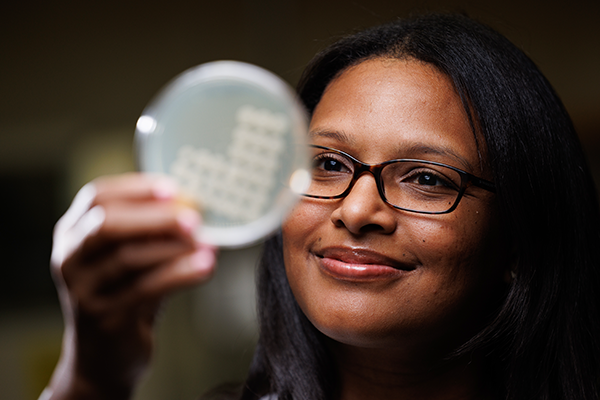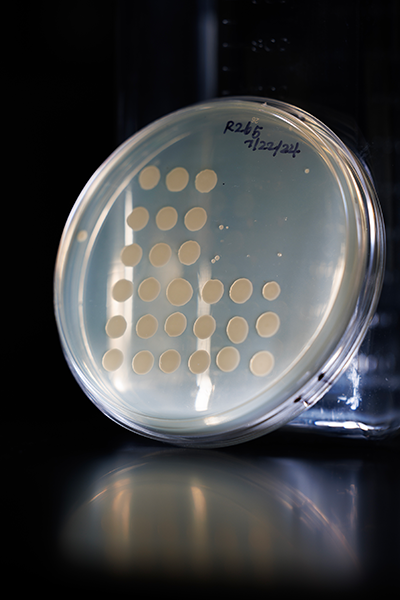
In a new study, scientists at Duke University School of Medicine have identified a potential new front in the battle against fungal infections, a growing health threat.
By determining two structures of a crucial enzyme involved in fungal survival, scientists have pinpointed a pathway that could be key to developing new antifungal drugs.
“We’re examining how fungal pathogens adapt to stress and how that contributes to disease,” said Erica J. Washington, PhD, a Duke Science and Technology scholar and research assistant professor in the Department of Molecular Genetics and Microbiology. “We’re interested in the trehalose biosynthesis pathway that is essential for fungi to survive at high temperatures, similar to those found in the human body. It’s an exciting, novel antifungal drug target.”
Most fungi are harmless, but some have figured out how to survive in the heat of our bodies.
They do this with the help of a disaccharide called trehalose, which is simply two linked glucose molecules. It acts as a protective shield, enabling the fungus to thrive in harsh conditions allowing the fungus to colonize humans and cause serious disease.
“If we can disrupt this pathway, we can potentially prevent fungal infections,” Washington said. “This could have a huge impact on human health.”
Fungal infections result in 1.5 million deaths worldwide.
Cryptococcus neoformans, a fungus that can cause a fatal brain infection, is a particular concern. It’s one of a handful of fungi that prey on those whose immune systems have been weakened by HIV, medical treatments, or organ transplants.
“Cryptococcus is a real challenge,” Washington said. “It can start as a lung infection and spread to the brain which is almost always fatal. With more people becoming immunocompromised, the risk of these deadly infections is growing.”

The research is also shedding light on how climate change is affecting the fungal world. “Understanding how the trehalose pathway contributes to thermotolerance may help address the challenges posed by climate change.”
Washington collaborated with Richard G. Brennan, PhD, professor and chair of the Duke Department of Biochemistry on the study to unveil two intricate structures of the enzyme involved in producing trehalose, fungi’s secret weapon.
"We think this is an ideal target for new antifungal drugs, as humans do not have the machinery to make trehalose, thereby limiting off-target drug effects,” Brennan said.
Researchers focused on the trehalose-6-phosphate synthase (Tps1) enzyme. Using cryo-electron microscopy (cryo-EM), they were able to visualize the detailed structure of Cryptococcus neoformans Tps1 for the first time.
The Tps1 enzyme was found to form a complex structure, known as homo-tetramer, comprising four identical subunits. The new structural findings suggest that disrupting the enzyme’s complex formation could be a potential strategy for inhibiting the pathway, thereby crippling this fungus’ ability to survive in humans.
Identifying and mapping the right target, like Tps1, is a crucial first step.
Much of what’s known about the trehalose pathway was discovered at Duke with John Perfect, MD, chief of the Division of Infectious Diseases, leading research of its connections to various fungal infections including Cryptococcus, Aspergillus and Candida albicans.
The use of cryo-EM was critical for the study published July 31 in the Proceedings of the National Academy of Sciences. Unlike traditional X-ray crystallography, cryo-EM does not require protein crystallization, which can be a significant hurdle, especially for large complexes or with proteins with structurally disordered regions.
This technique allowed researchers to achieve high resolution images of the Tps1 enzyme, enabling detailed studies of its interactions with small molecules and the motions that it makes upon binding these compounds.
The implication of the findings extends beyond just one fungal species. By understanding how trehalose contributes to fungal survival and identifying key structural components involved in its synthesis, scientists can explore similar pathways in other harmful fungi.